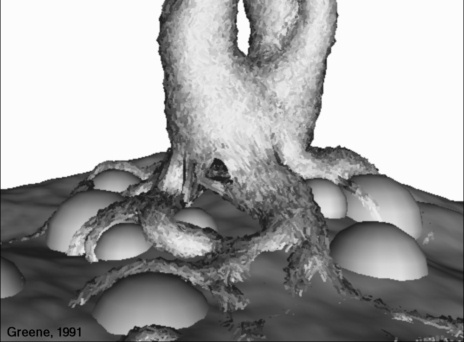Diffusion-limited aggregation and growth represent one
extension of Eden's model explaining the formation of branching patterns.
Another extension was proposed by Ulam [Ula1962],
the co-inventor of cellular automata. A cellular automaton consists of cells,
arranged in a (usually) square grid, and communicating with each other.
Ulam assumed that new cells can be added on the border of the structure
formed so far only if these cells do not collide with each other or with
the previously added cells.
The development of the resulting branching structure, which
he called Maltese crosses, is illustrated in
Animation 3.
An interesting feature of this model is
its sensitivity to the environment (note that DLA models are also sensitive
to the environment).
For example,
Animation 4
presents
the development of a Maltese cross affected by an obstacle (shown in white).
Although the structure is somewhat distorted, it accommodates
the presence of the obstacle and grows around it without loosing its branching
character.
A three-dimensional extension of this basic
concept was applied by Greene [Gre1991]
to model the development of tree roots around the stones in the ground (
Plate 11).

A similar concept was applied in [Gre1989]
to simulate the development of vines around a house. |